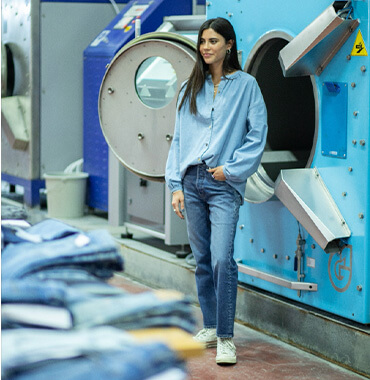NFTs and Digital Garments: Future or Fad?
The idea of buying a garment that doesn’t physically exist is an odd concept. It’s reminiscent of The Emperor’s New Clothes fairytale in which the emperor buys magnificent cloths that are invisible to those who are stupid and incompetent, or so the salesman says.
The idea of buying a garment that doesn’t physically exist is an odd concept. It’s reminiscent of The Emperor’s New Clothes fairytale in which the emperor buys magnificent cloths that are invisible to those who are stupid and incompetent, or so the salesman says. Obviously, the garments the emperor had made out of these “magnificent” cloths were in fact, invisible, and he ran around town in his underwear. Although running around naked might be okay for the time being, with stay-at-home orders still in place, the world is starting to open up. And we will need physical clothes that are physically visible to everyone. So, will digital garments and NFTs have a real place in our new world, or is this just a fad? Let’s explore. You might be wondering what an NFT is, but let’s start with what it stands for: Non-fungible Token. Non-fungible means that the piece is absolutely unique and cannot be replaced with anything. The unique data is stored and authenticated through the Ethereum blockchain, ready to be purchased and displayed on your screen as the original and sole owner of this one-of-a-kind item. Ethereum is a cryptocurrency, like bitcoin, but its blockchain also supports these NFTs, ensuring our digital pieces are authentic and non-counterfeit! But be sure to keep in mind that a digital garment is not necessarily an NFT. So, where do NFTS and digital garments fit into our lives? When the world was introduced to A.I. influencers, like Lil Miquela, in 2016 and saw the first digital dress sell for $9500 in 2019, people started talking. Enter 2020, and the push towards digital propelled these tech trends at lightspeed. Now we have seen multiple digital denim and fashion collections displayed across our screens for various fashion week catwalks, independent brand collections, and influencers who are testing new methods of working to curb their excess consumption. But, digital garments aren’t widely worn or bought by the average person. If anything, digital garments and NFTs are products fueling status. It all started in the gaming world where players wanted to differentiate themselves by clothing their avatars with recognizable brands or pieces that increased their social status. Since then, virtual fashion has proved to be a profitable venture outside of the gaming sphere, with RTFKT and digital artist Fewocious netting around $3.1 million earlier this year on their digital shoe. This opens up a big window for brands to capitalize on. Most think of a digital product when exploring the concept for fashion, but NFTs can be virtually anything - from songs to old tweets - meaning fashion NFTs could venture beyond products and into photos, fashion shows, interviews, or even viral social media posts. And with the continuation of virtual trade shows and experiences, the marketplace for trendy digital skins and avatars could be an exciting point of exploration. Virtual fashion has caught some attention for environmental reasons, as well. Because nothing is ever produced, no waste is ever created. But, there are some serious concerns. Data carries a hefty environmental cost, and minting assets on the blockchain requires significant energy use. For example, according to the University of Cambridge, Bitcoin uses more electricity in a year than all of Argentina. Still, the high prices NFTs are going for have created a shock factor driving this new age of art collection. Like sophisticated art collectors who want to own one of Van Gogh’s original creations, NFT consumers want the original. Think about this: anyone can buy a print of Van Gogh’s Starry Night, but only one person can own the original. The same goes for NFTs. But, is the average consumer buying in? The consumers driving these prices are from the gaming and crypto scenes making its future look uncertain. But, experts say that with more competition entering, the prices are sure to come down, making these digital items more accessible. Take Gucci’s digital sneaker selling for $11.99 that can be shown off on Snapchat. So are NFTs and virtual fashion the future of our industry or just a fad? Virtual worlds and digital experiences are here to stay with the endless opportunities that come with it. We won’t be walking around wearing greenscreens projecting our outfits (anytime soon), but we might start to dabble in purchasing digital items that boost our street cred or provide a further experience to something physical. It will be interesting to see how brands approach hybrid models to bridge their digital and physical worlds and create a cohesive brand image across all touchpoints.
To view full content and a better mobile experience, try



